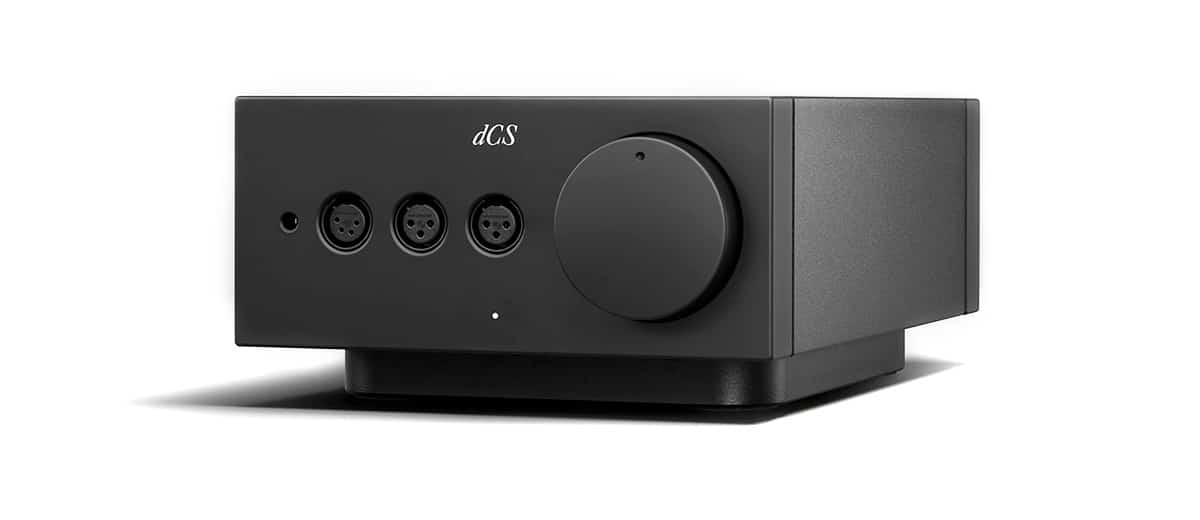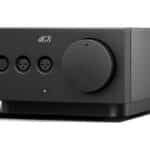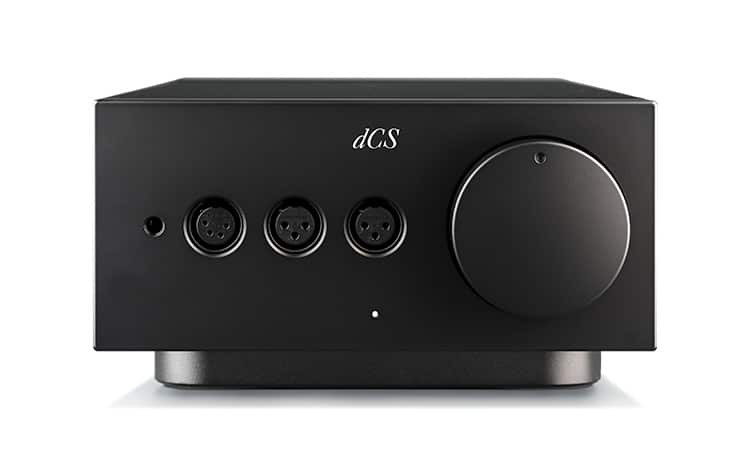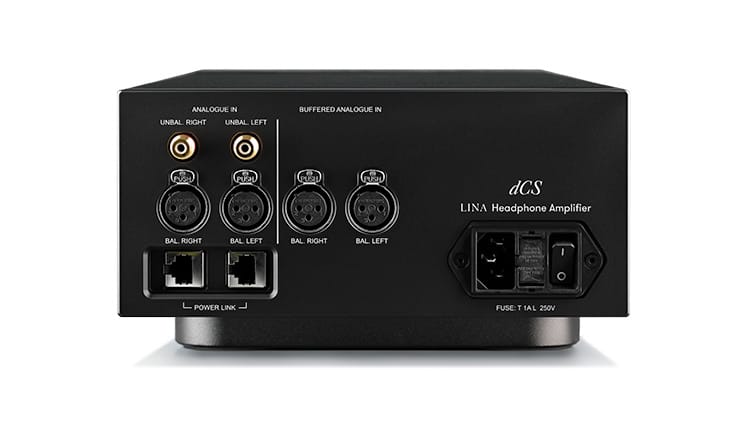In today’s feature, we review the dCS Lina Headphone amplifier which is a new high-end modular balanced solid-state headphone amplifier. It is priced at £8400.
Disclaimer: This sample was sent to us on a long-term loan in exchange for our honest opinion. Headfonics is an independent website with no affiliate links or status. We thank dCS for this opportunity.
Click here to read more about dCS products that we have previously covered on Headfonics.
Note, that this article follows our latest scoring guidelines which you can read here.
Was it to be expected? I mean the Bartok was an incredible bit of gear and rightly earned our Top Gear Award for 2020 so I guess it is no surprise that dCS decided this was a good moment to go all in, boots and all, and embrace our vibrant headphone community.
The resulting outcome? The modular, or stackable, Lina system comprising of a solid-state headphone amplifier, a DAC, and a separate Master Clock. Together, they make a whole, hence the singular name but can also be purchased separately.
Which is a good thing because dCS are known to be ultra high-end in their pitch and these beautifully designed units have a price to match. The Lina Network DAC will set you back £11,750, the Lina Master clock at £6,750, and the solid-state Lina Headphone amplifier at £8,400.
Today’s in-depth is on the latter, the Lina headphone amplifier and dCS’s first ever dedicated analog amplifier, which luckily enough, is dedicated to us, the humble headphone user.
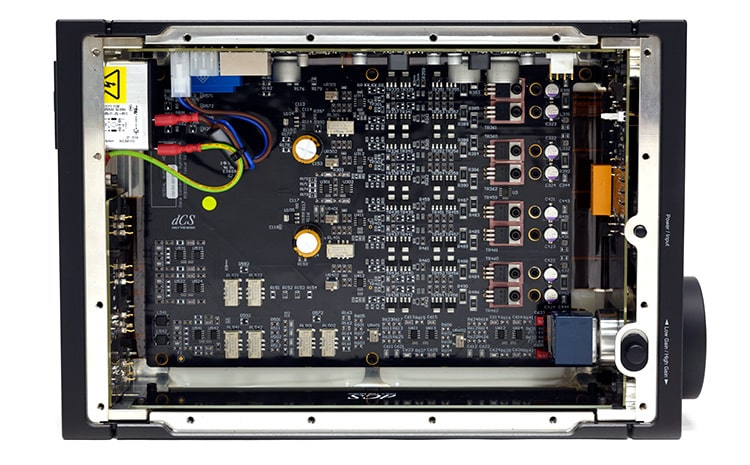
Tech Highlights
Topology
The Lina headphone amplifier is a pure analog solid state Class AB design. This is not a’ chop suey’ of the Bartok integrated amplifier which operated on a Class A principle and there is good reason for that.
Bartok’s integrated approach and the use of a Class A topology gave it a fairly broad scope for headphones but its use case goes beyond that with its preamp and integrated DAC functionality.
This time around, there is no pre-amp, it’s all headphones, and since the market is saturated with all types of headphones the scope has to be widened even further. This amp has to cope with anything from a modest IEM to a higher-powered planar or a high-load dynamic driver.
Class AB
To do that a couple of important changes were implemented that moved the Lina amplifier away from the Bartok design. The first was a switch to Class AB primarily out of a drive for better efficiency levels, cooler operation, and to improve distortion performance.
Class AB’s push and pull resistor (positive, negative), topology allows for a better balance between smaller current outputs in Class A and higher current outputs in Class B but because you have a crossover point typically called the ‘dead zone’ the potential for error and distortion is higher than operating in a single Class A.
To reduce the distortion potential dCS has developed a DC servo system with a unique error correction technique, which allows the Lina amplifier to maintain a clean signal path and correct incoming voltages at the source. Ideally, you get the performance benefits of a Class A system, while keeping also keeping heat and power usage under control.

Current/Voltage Balancing
The second change in approach was dealing with power requirements. Not just in more mW as you would read it in the tech specs, but rather the potential power output from balancing the voltage and current limits that are available to allow for optimal performances for everything including planar drivers that often require both in high quantities.
To that end, the Lina amp current limit and the voltage rails are now considerably higher than that of the Bartok design. That means lower impedance headphones will get more power than what was available on the Bartok amp as well as gear with higher rated loads.
Performance Numbers
The Lina amplifier is both balanced and single-ended with a headline figure of 2W into 30Ω balanced which is higher than the 1.4W into 32Ω rating of the Bartok. That is further supported by a dual gain control system with a 10.5dB swing.
You also get a significant boost on the very highest measured 300Ω load rating of 0.48W balanced compared to Bartok’s 0.15W on the equivalent balanced load. So, even at a rudimentary level, the Lina amplifier is the more powerful of the two units for driving headphones at those key milestones.
Interestingly, the Lina amplifier current and voltage balance are actually optimal at around 60Ω, quite possibly around the same marker that was also ideal for the Bartok.
What that means is that the 2W 30Ω rating should not be translated as its peak power rating since below 60Ω, voltage gives way to current in terms of bias. In actual fact, the amplifier peaks at just under 4.5W balanced at around 60Ω which is right where the Susvara impedance rating is.
Also, the amplifier achieves its full output voltage swing with any headphone above 45Ω, so with 45-60Ω or typical planar ratings, the power is optimized.
It’s not just power though for optimal driving, and we have to go back again to the pitch of coping with the widest range of headgear possible, more so than the Bartok. To that end, the Lina also has a low output impedance level of < 0.090Ω which will mean sensitive gear is far more resistant to impedance skew.
Design
The Lina Amplifier styling is a mix of a robust machined aluminum chassis with a matte black finished minimalist low-profile fascia dominated by a huge Cyrus Audio-style potentiometer wheel.
It weighs in at a 7.5KG so much lighter than the bigger twin toroidal-packed Bartok but still might surprise you with its heft when lifting it out of its packaging. I do appreciate that matte back finishes also on the dial which allows it to retain a smooth finish but still feels grippy at the same time when in use.
Though the design language has some similarities with dCS’s higher-end gear including the Bartok, it does nevertheless, stand out on its own with its elongated rather than wide body form factor and the lack of LCD given its analog design.
That ‘shoebox’ style is surprisingly compact giving you some options in terms of racking and since it’s a mirror of the form factor from the accompanying Lina DAC and Master Clock you can stack all 3 on top of each other if you so wish.
I suspect dCS had that in mind because the stabilizing system underneath is very attractively designed to create an illusion of separation between all 3 units when stacked, (or the rack floor if singular).
Instead of flat feet or the traditional pillar stabilizer design, it is a curved long body design with the feet discreetly positioned at each internal corner. It keeps everything very steady and at the same time keeps the smooth design floor completely uninterrupted.
I/O
Front Panel
You have 5 I/O on the front panel including the customized RK Alps RK271 in a rheostat mode for current control. There are 4 dedicated XLR and SE outputs with a choice of balanced 4-pin XLR, 6.35mm SE to the far left side, and in between a dual 3-pin XLR for left/right balanced output connections.
Sadly, there is no 4.4mm balanced output which might have been useful for more modern output connections. Chiefly IEM users who wish to go balanced though these days headphones can and do come with balanced 4.4mm outputs.
One thing you will have to get used to for the Lina design application is the lack of labeling on the front fascia meaning you will have to have a degree of familiarity with what each output offers or alternatively read the manual if you do not. I presume that is in keeping with that minimalist monotone design language.
Because of the minimalist design, you might also miss the two very discreetly positioned buttons on the underside of the front fascia.
These are positioned centrally for powering up the unit and selecting the input source and to the far right under the pot for gain selection. Note, that power control is also dependent on a master switch located at the rear beside the power socket.
Rear Panel
One other major difference going from the Bartok to the Lina is the addition of analog inputs to receive a signal from either the Lina DAC or a 3rd party DAC of your choice. Here, again, there is a unique choice in the performance with not one, but two different types of input for balance called buffered and unbuffered.
The difference lies between their respective impedance levels with the unbuffered balanced XLR rated a lot lower at 16kΩ compared to the buffered equivalent of 96kΩ, (SE is 48kΩ consistent).
The unbuffered and more demanding balanced XLR input is intended specifically for pairing with the Lina DAC. The buffered XLR input is for pairing with different 3rd party audio sources that may have a lower voltage output and typically requires a higher impedance rating.
You will know which channel is in use with a small LED light status change on the front panel. Blue will denote the buffered balanced channel in use and magenta meaning unbuffered SE is being used. A further white LED lights up when using the unbuffered balanced output of the Lina amp.
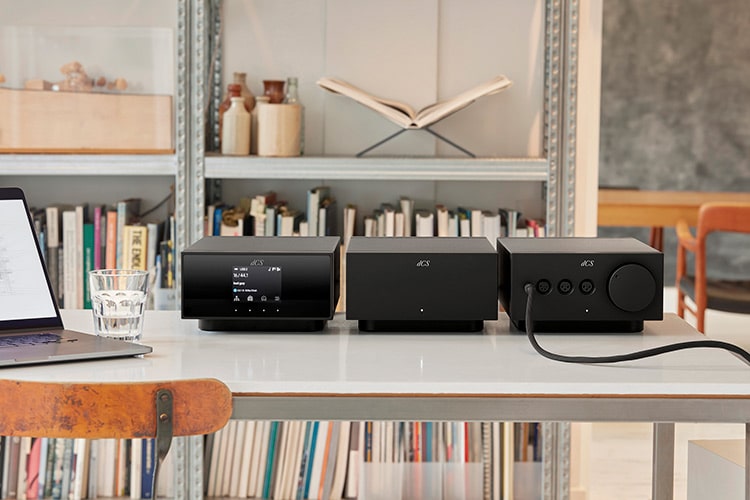
Controls
The Lina amplifier is entirely analog with nothing in the way of remote control capability in its own right. That means if you buy the amplifier alone you will have to go back and forth for volume control, power, and input source selection which might be a bummer for those with 3m headphone setups and comfortable reclining chairs.
On the flip side, the potentiometer on the far right of the front panel is just superbly smooth and even-handed in delivering an ever-increasing amount of current to whatever headphone you have jacked in. I am not detecting any channel imbalance either, even at very low volume levels.
When integrated with the Lina DAC you do get some indirect remote control with built-in RJ45 ports on the rear panel which operates as a remote power link system when hooked up to the DAC. dCS does supply the required RJ45 terminated cables so I wouldn’t panic if you think you need to buy additional ethernet wiring.
Packaging & Accessories
The Lina amplifier comes in an absolute beast of a retail box. It is much bigger than the amplifier itself and primarily with an intent to provide a rock-solid shipping experience to reduce the potential for damage during transit.
Given its SRP, the less return due to damage the better the customer experience but it also goes some way towards satisfying the expectation bias that a premium purchase should come in a premium packaging experience.
Outside is a fairly standard brown box experience but slip that off you get a two-piece dCS branded black container that lifts off to give you a very densely foam padded internal layout with an attractive leather pouch front and center containing your user guide and a dCS community pamphlet.
Accessories
The actual unit is about a foot deep into that foam layering and underneath the unit itself, you have another layer with recessed bays and all the accessories individually inserted into each bay.
The accessories included are somewhat frugal for the Lina amplifier but a bit more comprehensive for the DAC. You get a power cord and two RJ45 power link cables. I would have liked to have seen a set of dual RCA or DUAL XLR in there also to get it operating out of the box right away. The dual XLR is something you get with the Lina DAC.

